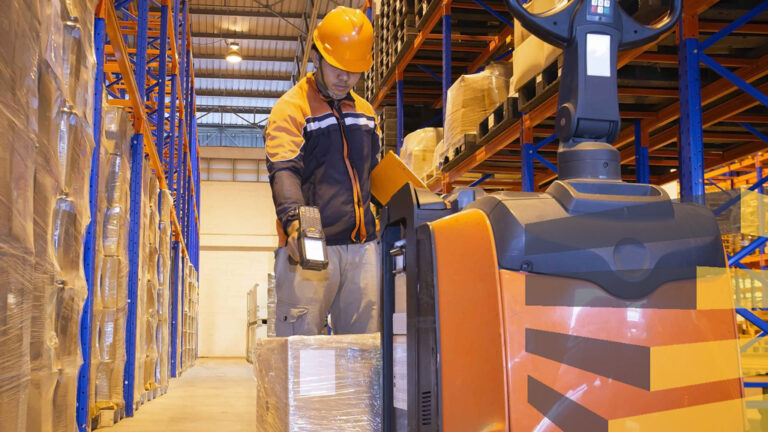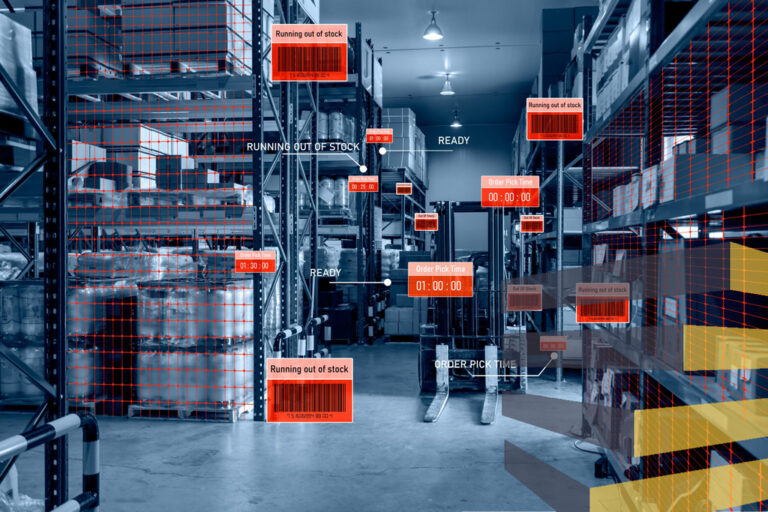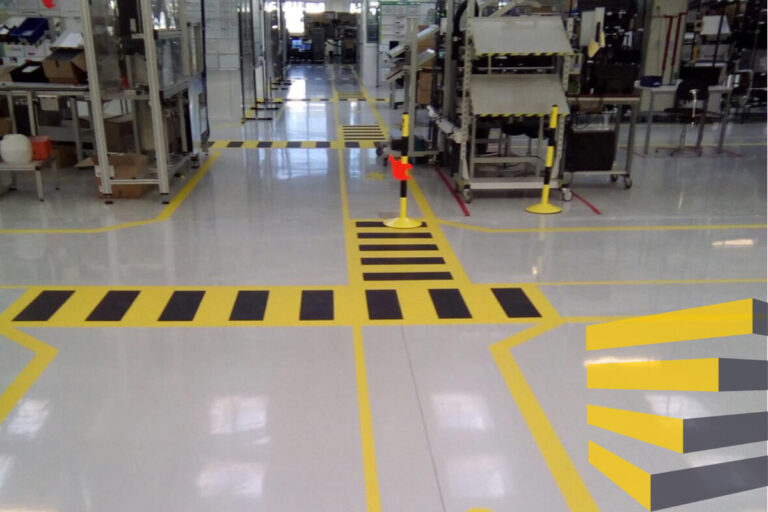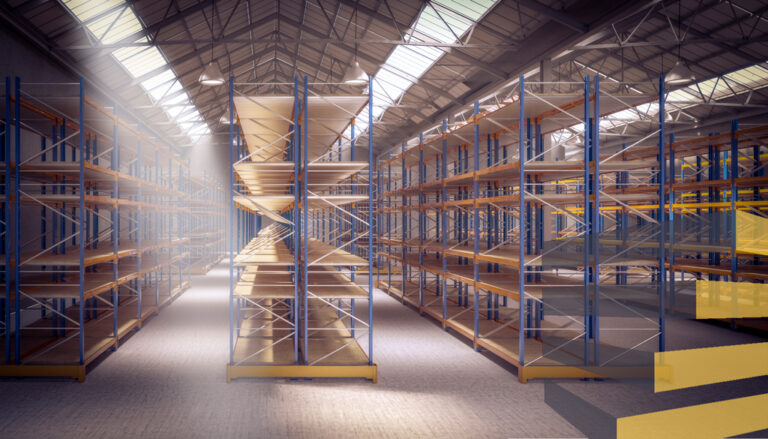Table of Contents
Warehouse racking is a fundamental part of any warehouse setup, bringing organization and efficiency to operations.
Well-placed racks allow for maximum space utilization and help workers to easily access and store goods, while poorly planned racking can hinder the smooth running of any warehouse or distribution center.
Warehouse racking is a critical part of a complex system, which also comprises the proper layout and distribution of the space, the placement of the likes of collision guards and other warehouse barriers, and includes the people, goods, and machinery that will be moving in the area when it is in operation. So it important to get your warehouse racking system right.
Warehouse racking systems
Warehouse racking often uses a pallet as a base that supports the storage of boxes and heavy materials. The pallets are distributed in horizontal rows at various levels to make the most of the space.
The number of pallets placed vertically depends on the weight supported by the base material. Forklift trucks are used to reach the pallets, which have the function of loading and unloading the materials to be stored.
This popular storage system can be found in a variety of sizes and shapes, and choosing which to use will be largely based on the goods they will be carrying.
Warehouse racking design
Prior to installing the racking system in your warehouse, you must first assess your needs so that you can design and plan the system appropriately.
That design will be based on the layout of the space, the type of goods being stored, and the access that will be needed to them, and making mistakes when setting up warehouse racking can end up being costly.
So you may prefer to contract professionals with a proven track record of designing the layout and setting up warehouses before committing to purchasing or installing any particular type of racking.
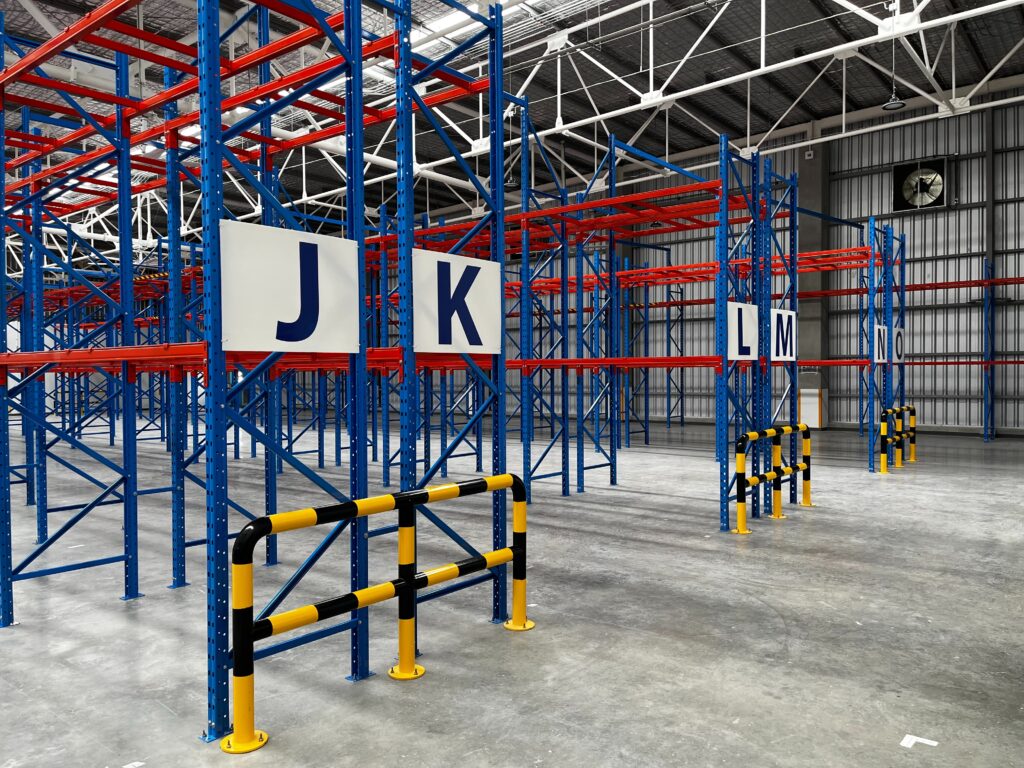
Pallet racking protected by collision guards
6 types of pallet racking
The following six types of pallet racks are some of the most popular variations of warehouse racking available:
1) Conventional pallet racks
Conventional pallet racks are one of the most widely used types of warehouse racking, know for being capable of holding heavy goods and usable in narrow aisles.
Such pallets will often be moved using forklift trucks, but may also be transported on standard pallet jacks. Stacking such pallets will usually involve using beams, mesh and stowage stops to provide additional safety.
This type of racking is the most common type of racking, and generally a less costly option to install compared to others.
2) Very narrow aisle racking
Very narrow aisle racking is used to get the most out of restricted spaces, and as the name suggests are placed in a way that leaves limited space between them.
The major advantage of this type of warehouse racking is the fact that goods can be stored at high density, however that can also create additional hazards, depending on the goods being stored.
To access these racks, specially designed forklifts must be used, so it is worth keeping in mind the neccessity of having such machinery when considering installation.
3) Drive-in and drive-through racks
Drive in and drive-through racks are warehouse racking systems that allow vehicles to enter and pass through them, in which pallets can be stacked deep as well as high.
Drive-in racks will be set up so that there is only one access point, and as such are useful for storing goods that are going to be kept in storage for a signifcant period of time, given that access to those placed at the back end of the rack will require everything in front of it to be moved.
Drive-through racks, meanwhile, are loaded from one end and picked from another, meaning that they are useful for storing high-demand goods.
4) Live pallet racking
Live pallet racking uses a first in, first out (or “FIFO”) system for holding pallets, as well as bed rollers and a sloped design, so that goods placed on them automatically roll from where they are loaded to where they will be picked.
As such they are similar to drive-through racking, but which effectively deliver the pallets to where they will be picked. This is also energy efficient, because the racks rely on gravity to do a significant amount of the movement of goods.
This type of warehouse racking is particularly useful for storing goods that are in very quick circulation.
5) Push-back pallet racking
Where live pallet racking involves a FIFO system, push-back pallet racking is based on a last in, first out (LIFO) system, with loading and picking done at the same end of the rack.
Push-back pallet racking is generally designed to allow goods to be stored between two and six pallets deep, as well as multiple pallets high.
This type of warehouse racking also often uses rollers, so that those items stored deeper are automatically brought to the front of the rack when goods stored in front of them are removed.
6) Double-deep warehouse racking
Double-deep warehouse racking offers something of a middle ground between arrangements desiged for easy access and those designed for high-density storage.
Because while the fact that goods are stored two pallets deep allows for larger quantities of goods to be stored than standard racking, the fact that only one pallet ever needs to be removed to provide access to another means that access remains relatively quick and easy.
One thing to keep in mind, however, is the fact that not all forklifts will be able to access goods kept at the back of double-deep racking, so its installation will require the availability of suitable vehicles.
Serviap Logistics provides and installs warehouse racking
At Serviap Logistics, we provide and install warehouse features in Brazil, Mexico, and the United States.
Those include racking, signage, labels, floor marking, and collision protection. We also offer project management services, and can oversee your warehouse setup, refit, or relocation from start to finish.
We count some of the world’s biggest companies among our satisfied clients and partners, covering a wide range of sectors, including automotive, e-commerce, and wholesale, among others.
As a family-run company that has grown internationally after starting out in Mexico, we are committed to service excellence and pride ourselves in providing a personalized service to every client.
We are also dedicated to upholding the highest safety standards wherever we work, including being OSHA certified in the United States.
Contact us today to find out more about how we can assist you with your warehouse racking.
If you were interested in this article about warehouse racking, check out the rest of our coverage.



